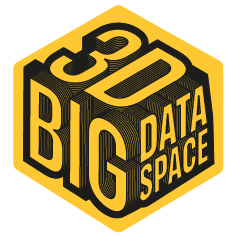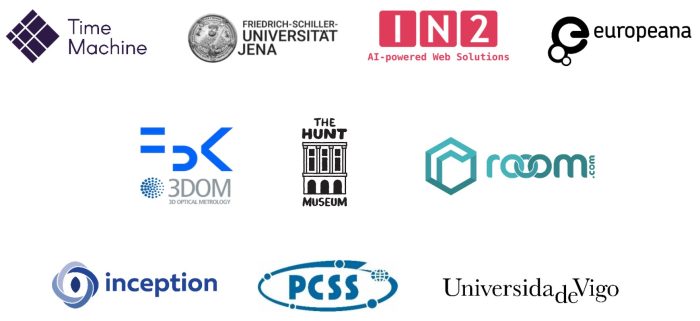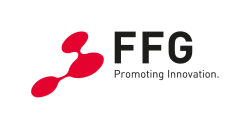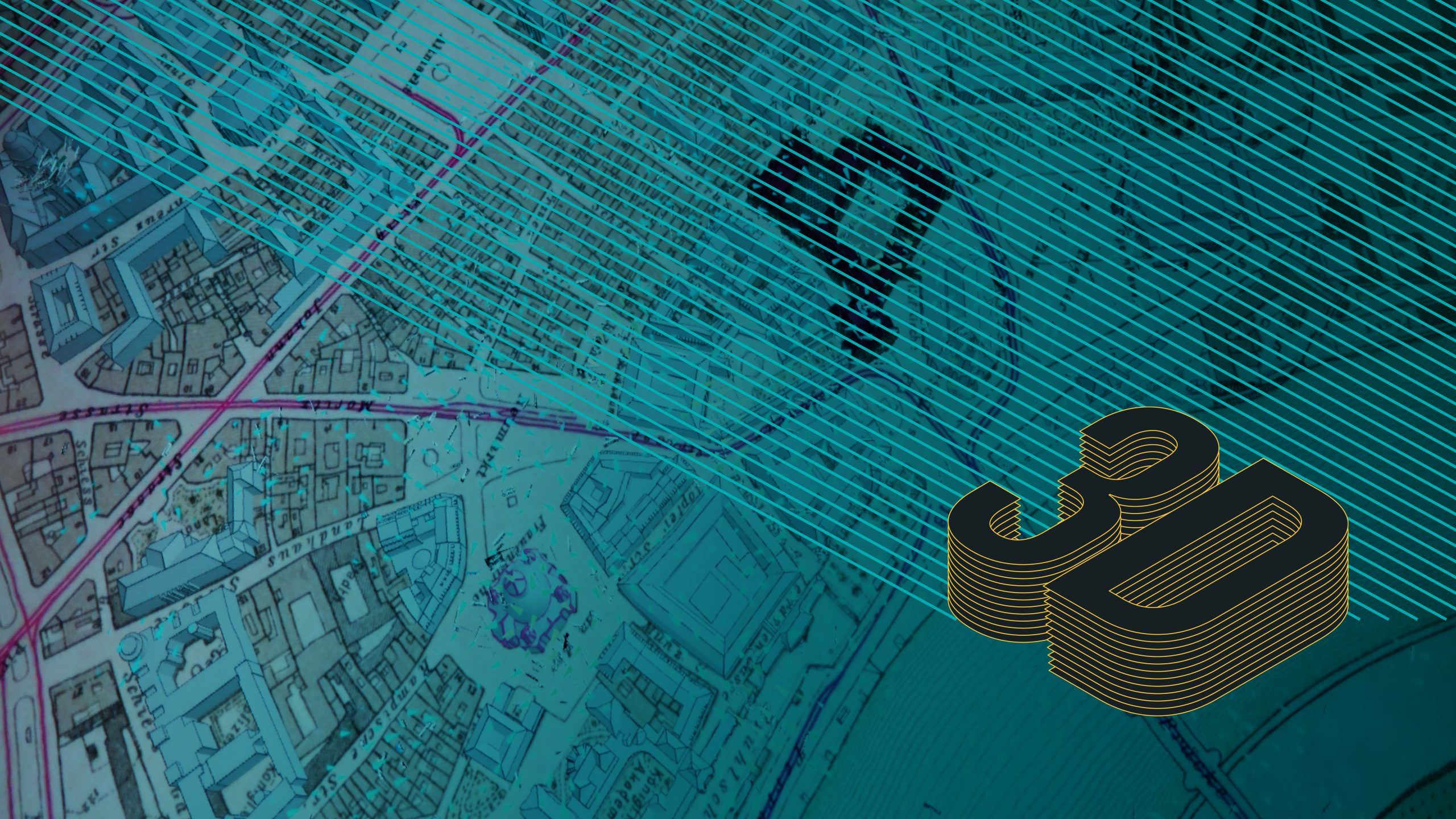The 3DBigDataSpace project aims to prototype a Europe-wide stable and long-term storage of 3D cultural heritage assets and metadata from different providers and aggregators. By developing tools for augmentation and harmonisation, it is intended to enhance the findability, quality and re-use of 3D content for augmented reality viewers and 4D world applications. The project is co-funded by the European Union and carried out by twelve collaborating organisations.

The Time Machine Organisation (TMO) is the coordinator of the 3DBigDataSpace project. The TMO maintains and curates an international network of currently more than 150 projects and initiatives – Local Time Machine (LTM) projects – dealing with history and heritage in specific cities or regions. The TMO’s primary mission is to gather different groups to collect and refine digital information, making sure it stays relevant to evolving economic, social, cultural, and geographical factors. Therefore, it is planned to develop a space-time aggregator of historical information.
As part of its contribution to the 3DBigDataSpace project, the TMO is launching a series of calls within the Synergy Grants Programme. In this second call, two 3D outreach heritage projects will be selected to carry out a subcontracted project task within 3DBigDataSpace, designing and developing engaging and innovative applications that use 3DBigDataSpace tools for AR or web-based display. The goal is to contribute to 3DBigDataSpace outreach by developing applications that engage a broad public audience. Each selected applicant will sign a subcontract with TMO for a total payment of €10,000 linked to the delivery of agreed outputs.
Timeline
| 23 October 2025 | Launch of the call |
| 15 December 2025 | Deadline of applications |
| 27 January 2026 | Notification of acceptance |
| March 2026 | Project start |
| June 2026 | Project end |
This call is the second one in a series of calls within the TMO Synergy Grants Programme. Further calls on digitisation training will be available in the next months.
Target Audience
This call is open to organisations dealing with 3D heritage digitisation and modelling such as:
- Research groups (e.g. universities, institutes, R&D departments)
- GLAM representatives (i.e. galleries, libraries, archives, museums)
- Public stakeholders (e.g. local administrations, tourism offices)
- Private stakeholders (e.g. XR application developers, NGOs)
The main applicant may also choose to collaborate with a project partner. This is optional but encouraged. The partner can be any organisation, for example a museum, tourism office, private company, or research institution.
For further details on the role and conditions of project partners, see the FAQ section.
Target Content and Expected Outcomes
We are seeking two creative and innovative projects that demonstrate new ways of engaging the public with 3D cultural heritage content.
Applicants are invited to design an experience concept that uses at least one of the 3DBigDataSpace tools to present and interact with 3D assets:
- PCSS Viewer: a web-based 3D viewer for exploring digital objects and collections.
- 4D Viewer: a browser-based tool to visualise models in their spatial and temporal context.
- Rooom XR Viewer: a platform for immersive AR presentation and interaction.
See this document for detailed information on the tools, their capabilities and how they can be integrated into other platforms.
Proposals shall make use of the applicant’s own 3D assets and/or 3D assets available from the 3DBigDataSpace repository (https://3drepo.eu/), which is continuously being extended in terms of content and functionality. The assets may cover any period, region, or scale – from single artifacts to complex architectural or urban scenes. Complementary media such as text, audio, or video can be used to enrich the experience.
At the application stage, participants are expected to submit a design proposal outlining their concept and approach for using the 3DBigDataSpace tools. Applicants may also propose to adapt an existing or preliminary 3D experience to integrate the tools from 3DBigDataSpace and meet the objectives of the call. If selected, applicants will then develop and deploy the proposed experience.
Possible application scenarios include, but are not limited to:
- Virtual guiding and storytelling – interactive tours, reconstructions, or 4D map-based explorations.
- Presentation of 3D artefacts with annotations – contextualising objects in situ or remotely.
- Educational experiences – online or on-site learning activities, quizzes, or lessons.
- Gamified approaches – heritage-based challenges, geo-caching, or role-playing scenarios.
- Collaborative or participatory projects – citizen science, community storytelling, or co-creation of cultural memory.
- AR or immersive installations – visualising historical spaces, monuments, or artefacts in their original environments.
After development, the final application must be advertised and made available to the public, for example through exhibitions, museums, workshops, touristic activities, educational events, websites, or webinars. Presentations may use digital interfaces such as touchscreens, VR headsets, or tablets.
Emphasis is placed on engagement, accessibility, and visibility. Proposals should clearly explain how the experience will reach and involve the target users, specify the expected audience size and type, and describe how audience reach will be monitored and evaluated during the activity.
The results and findings of the implementation and dissemination activity must be internally and externally reported and presented.
Eligibility Criteria
The applicant’s organisation must:
- Be based in a member state of the European Union or in a country currently associated with Horizon Europe.
- Not be receiving, nor have previously received, separate financial support from the European Union or other sources for performing the same outreach activity (to avoid double subcontracting/payment).
- Use the payment exclusively for the specified purposes of this call and not others (e.g. digitising new 3D assets)
Obligations
Selected applicants must:
- Develop a demo application using 3D assets from their own sources and/or from the 3DBigDataSpace project (see above).
- Apply the 3DBigDataSpace tools (see above) in the development of the demo application.
- Present the demo application to the public, reaching at least 100 users by the end of the project.*
- Participate in a European public event (e.g. conference, workshop) to present the application and its dissemination strategy after its completion.
- Document the demo case (e.g. technical specification, accessibility) and dissemination activities in reports and as best practices (e.g. for Europeana, 3D-4CH).
* The number of users reached includes both in-person and online audiences, measured for example by visitor counts, individual website visitors, or event participants. The applicant must design an appropriate strategy to record and demonstrate this impact.
Benefits
Selected applicants will:
- Enter into a subcontract with TMO (total payment EUR 10,000**) to perform the specific project tasks and deliverables described in this call.
- Be accompanied in the registration of the dataset as an LTM project within the TMO.
- Receive technical guidance from TMO specialists relevant to performing the subcontracted tasks and integrating the 3DBigDataSpace tools.
- Gain access to the network and documentation of the twelve cooperating organisations involved within the 3DBigDataSpace project.
- Receive communication coverage to showcase their project by the TMO after a successful realisation.
** Payment will be issued in instalments, each tied to the verified completion of subcontracted tasks.
Evaluation Criteria
Submissions will be assessed based on the:
- Content of the proposed application (e.g. 3D assets, narrative)
- Functionality & Design of the proposed application integrating 3DBigDataSpace tools (e.g. concept, features, accessibility)
- Dissemination strategy & User engagement to reach the target groups (e.g., promotion, expected number of people, long-term sustainability)
- Feasibility of the project realisation (e.g. staff capacity and experience, time demand, budget, risks)
- Reusability, Impact & Interest for the cultural heritage community and other domains (e.g. co-operation with local/regional stakeholders, expansion potential, potential for the application to be adapted and reused by others)
Application Procedure
Applicants can participate by filling in the dedicated form (see button below). It is recommended to provide sufficient details in each relevant section. Only complete applications submitted through the form will be considered for evaluation.
Additional Information on the Tools
PCSS Viewer
The PCSS Viewer is a universal, web-based tool for displaying and working with 3D objects, created within the 3D Big Data Space project. It is built using React and Three.js, which ensures modern performance standards, lightweight operation and fast loading of models directly in the browser. The viewer supports GLB and GLTF formats and can also handle OBJ files. Integration into external platforms is straightforward, as demonstrated through the successful proof-of-concept embedding of the viewer inside the DFG Viewer via an iframe.
The tool offers interactive manipulation of 3D models, including rotation, zooming and positioning, and provides a set of practical features such as grid display with configurable colors, orientation aids and screenshot capability. A key characteristic is its annotation system: users can create, view and remove annotations directly on the model, and multiple annotations can be added. Annotation data is stored locally in the user’s browser, allowing the viewer to function without requiring account creation.
The viewer’s current codebase allows for relatively easy extension, supporting potential additions or adaptations for specific project needs. It has already been applied in an educational context in collaboration with the Hunt Museum and the University of Limerick, illustrating its suitability for teaching, exploration and collaborative heritage interpretation.
4D Viewer
The 4D Browser and 4D Viewer form a toolset designed to explore historical cityscapes, visualize how urban areas have changed over time and create cultural heritage experiences. The system allows contributors to upload 3D models, define their temporal attributes, position them within a geographic scene and combine them with photographs and other media. Content is added through a graphical user interface that supports searching for 3D files, uploading GLB or OBJ models and placing them directly in the scene with controls for rotation, scaling and time assignment. Once saved, the content becomes visible after passing through a moderation process.
The tool enables the creation of historical city scenes for exhibitions and digital storytelling. It has been used in contexts such as the Amsterdam water heritage exhibition. The browser allows users to explore transitions in cityscapes and opens placemarks that link to explanatory web material.
The platform also supports guided city walks through the 4D City mobile application. Points of interest can be created within the interface using text or markdown content and linked together into routes that users follow on site. These routes include descriptions, images and contextual information, and can be used for thematic tours, educational trails or cultural storytelling. Demonstrated examples include a literary tour in Dresden, a school project in which children describe meaningful city spots and treasure-hunt style explorations.
The toolset further provides access to large-scale 3D object visualization through WebXR. Models from the project’s repository can be opened directly in VR headsets, enabling immersive experiences of historical artefacts or reconstructions. The same models can also be displayed using holographic pyramids, both in small postcard-sized devices and in larger kiosk installations.
Rooom XR Viewer
The Rooom XR Viewer is a web-based solution for visualizing 3D models and experiencing them in augmented reality. It functions as a standalone webpage or as a component integrated into existing platforms, including its planned integration into the DFG Viewer. The viewer loads 3D models directly in the browser, allowing users to inspect them with standard navigation controls.
AR functionality is activated through a QR-code workflow. When scanning the QR code, users are directed to a web page where the model appears in a standard 3D viewer. A dedicated AR button then launches augmented reality mode. The device detects surfaces in the user’s environment and anchors the model, allowing it to be viewed, scaled, and inspected from all directions.
The viewer supports GLB models on Android and desktop devices and will support USDZ models for iOS. It offers a practical way to experience cultural heritage artefacts in a physical environment without requiring any app installation.
Q&A Session
In case you missed the Q&A session on Monday 17 November you can rewatch the recording on our Youtube Channel here:
The slides to the online session can be downloaded here.
FAQ
How will the applications be evaluated in detail?
Please find the questionnaire to be handed to the jury members here.
What is a project partner?
Applicants may choose to collaborate with a project partner, though this is optional. Partnerships are encouraged, as digitisation projects often benefit from combining the expertise of different organisations, fostering synergies, networking, and knowledge exchange, goals supported by both the European Commission and the Time Machine Organisation (TMO).
The partner can be any other organisation, not necessarily registered as a local Time Machine. For example, if the applicant is from a university, potential partners could include a museum, tourism office, private company, or another research institution (see the call’s target audience for further ideas).
Can the project partner work at the same organisation as the one of the applicant?
No, the project partner needs to be another organisation. For example, if the applicant works at a university, the project partner may be a museum, tourism office, private company, or another research institution. There are more examples of organisations in the target audience of the call description, which apply also for potential project partners.
What are the tasks and benefits for the project partner?
The project partner may serve as a consultant/expert, may carry out a part of the expected work, may gain knowledge from the applicant (e.g. by workshops), may contribute in carrying out the outreach activities, may advertise the developed application or other parts the work (e.g. social media, newspaper), etc.
Does the involvement of the project partner need be already formalised?
There are no formal requirements at this stage. Feel free to indicate the anticipated tasks and benefits of the project partner in section ‘3. Project Management’ in the application form. In case the application is successful, a contract will be established where tasks will be defined and assigned to the applicant and project partner.
Does the payment under the subcontract need to be shared with the project partner?
The subcontract will be signed only between TMO and the selected applicant. How the applicant allocates or shares the payment internally with a project partner is at the applicant’s discretion, as long as all agreed deliverables are fully met.
Can I propose applications using cultural heritage 3D assets outside of Europe?
Yes, submissions about historical 3D assets anywhere on Earth are welcome, however, your institution needs to be based in the European Union or in an associated state to Horizon Europe.
Are organisations from Switzerland eligible to participate in the call?
Yes. Switzerland has signed a transitional arrangement about the Horizon Package in April 2025 allowing a participation in calls.
Can freelancers apply?
Yes, they can. There is no exclusion of freelancers, but the subcontract must be signed by a legal entity with legal personality (i.e. an organisation that is able to enter into contracts).
Can non-professional, volunteer-based heritage organisations apply?
Yes, in principle they can be involved, but the partner that signs the subcontract must be a legal entity with legal personality, able to sign and manage a contract and receive funds. According to the evaluation critieria an applying entity needs to show that it has sufficient capacity to carry out the work. This usually means that a volunteer initiative should work together with a registered association, foundation, museum, municipality or other formal organisation that can take on the contractual and administrative responsibilities. Applicants should ensure that their chosen legal entity fulfils all national legal requirements and the eligibility criteria of the call.
Do applicants need to belong to the 3D Big Data Space consortium?
No. None of the project consortium members (3D Big Data Space partners) are allowed to apply. The call is specifically aimed at external organisations only.
Do we need to have digitized artifacts already at the time of application? Is there a minimum or maximum number?
The call is not meant to fund new digitisation of artifacts. It focuses on outreach activities that use existing 3D assets with the tools to reach audiences. You can use 3D assets from the project’s database (https://3drepo.eu/), which currently contains approximately 85,000 objects, or upload and use your own 3D assets from your repositories, or combine both sources. There is no limit on the number of artifacts; both small and large sets of assets are possible. Digitisation work itself is not funded in this call, as it was the focus of previous calls.
Can a proposal use more than one tool (e.g. PCSS Viewer + 4D Viewer)?
Yes. The minimum requirement is to use at least one of the tools, but there is no maximum. You may combine several tools, such as PCSS Viewer, 4D Viewer and Rooom XR Viewer, in the same proposal if this supports your concept.
How big can the “extent” of the project be? Can we work on a whole city, or many buildings, not just single artifacts?
There is no limitation to a single artifact. You can work with multiple objects, including many buildings or an entire area or city. The focus of the call is on the outreach activity itself: how you use tools and assets to design an educational, research or public engagement experience, rather than on restricting the number of objects.
Can the 3D Big Data Space tools be used alongside other digital tools (e.g. for immersive exhibitions or websites)?
Yes. Combining them with other digital tools is explicitly encouraged. You can embed the tools into websites or integrate them with other software and hardware in immersive exhibitions or digital experiences. The only requirement is that at least one of the 3D Big Data Space tools is actually used within your scenario.
Where can I find potential project partners?
You can consult the Time Machine Organization website. It offers a member base listing Time Machine members which can also help you identify cultural heritage and technology partners who may be interested in collaborating (https://www.timemachine.eu/members/).
What licenses are required for 3D objects stored on the central platform?
3D assets stored on the central platform must use Creative Commons (CC) licences. Acceptable examples include CC-BY, CC-NC (Non-Commercial), CC-SA (ShareAlike) and CC0. The exact choice of licence should reflect your rights situation and intended use, but it must be one of the CC family.
Can the applicant have more than one project partner?
Yes, it is possible to have more than one project partner. If you choose this option, you should provide information on all selected project partners in the application form so that their roles and contributions are clear.
Is the 4D Browser geographically limited to Europe?
No. The 4D Browser works worldwide and is not geographically limited.
If my project needs new features in the tools, will the consortium help implement them?
You should plan your proposal using the current state of the tools, because the development teams follow their own roadmap and have limited capacity. You are free to implement surrounding applications yourself as part of your project, for example embedding a viewer into your own website or building additional interfaces. However, new core features in the official tools cannot be guaranteed and should not be assumed as part of the outreach project.
Can the PCSS Viewer be embedded into Unity?
The PCSS Viewer can already be embedded into web applications via an iFrame, as demonstrated in its integration with the DFG Viewer. Its direct integration into a Unity application depends on the level of interaction required. According to a preliminary assessment by Unity experts at PCSS, integration is feasible at the UI and communication layers, but not at the 3D engine level.
Can the Rooom XR Viewer be used with Meta Quest 3?
The Rooom XR Viewer is primarily designed for mobile phones. For Meta Quest 3, it may work if you can open the DFG Viewer or the relevant web page in the Quest browser, but this setup has not been specifically tested. you may experiment with using it, keeping in mind that optimisation for standalone VR headsets is not guaranteed. For VR object views a specific VR viewer is selectable in the DFG 3D Viewer. This viewer uses WebXR for object visualization and has been tested with the Meta Quest.
Are there limits on model size in the PCSS Viewer (e.g. a whole village with annotations)?
There are no hard, predefined limits on model size in the PCSS Viewer. You can display larger scenes, such as a village with multiple annotated buildings. As with any 3D viewer, practical constraints are related to performance and loading times on the user’s hardware, rather than to formal restrictions in the tool itself.
How do VR experiences with headsets work technically? Which headsets are supported?
VR experiences are delivered via WebXR. You open the 3D objects through the browser inside the VR headset and then switch to VR mode. The setup has been tested with Meta Quest 2 and Meta Quest 3. In general, it should work with any headset that supports WebXR and can open the relevant web pages, although the level of performance and user experience may vary between devices and has not been systematically tested for all models.
Are the PCSS Viewer and VR applications suitable for architectural scale (inside and outside navigation)?
For the VR tools such as the 4D and Rooom XR viewers, the answer is yes: they are designed to support architectural scale and allow users to navigate both the exterior and interior of buildings, which is one of their intended use cases. The PCSS Viewer can also handle architectural models in principle; however, it currently does not implement collision detection or physics, so users can pass through walls and other obstacles.
Are you working with 3D Gaussian Splatting (3DGS)?
Yes. The DFG 3D Viewer currently includes a Gaussian Splat viewer stack for splats generated by Luma AI and available as PLY.
Contact
If you have any other questions or inquiries regarding the call and application procedure, please send an email to ltm[at]timemachine.eu.



